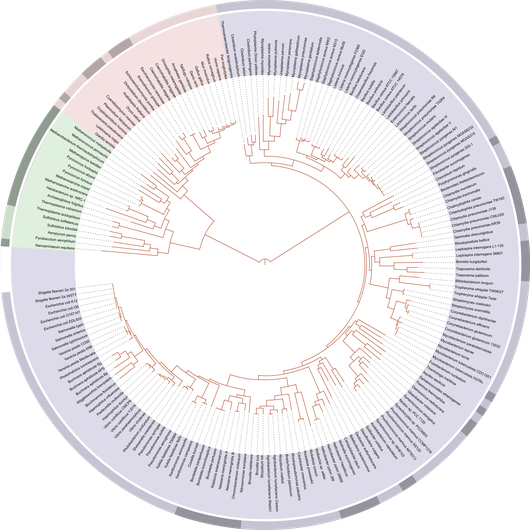A phylogeny is a tree that best represents the evolutionary relationships between a collection of taxa and their proposed ancestors. The process by which a phylogeny is created can differ widely, which can in turn induce varying phylogenies. As a result, we often require methods of analyzing and comparing phylogenies once we have created them.
We normally use binary trees to model phylogenies, in which every node has degree at most 3 to represent the Darwinian evolutionary tenet that a species is created by a distinct event in which it branches off from an existing species.
In the figure below is depicted an unrooted binary tree, which is a specific form of a binary tree in which no node is allowed to have degree 2. As a result of this definition, we lack an obvious location for the root, which accounts for the rendering of the tree below in which the leaves corresponding to taxa have been spread the outside of a circle.

The term "phylogeny" can also be ambiguous, as researchers often also use the term to refer to the construction and analysis of phylogenies.